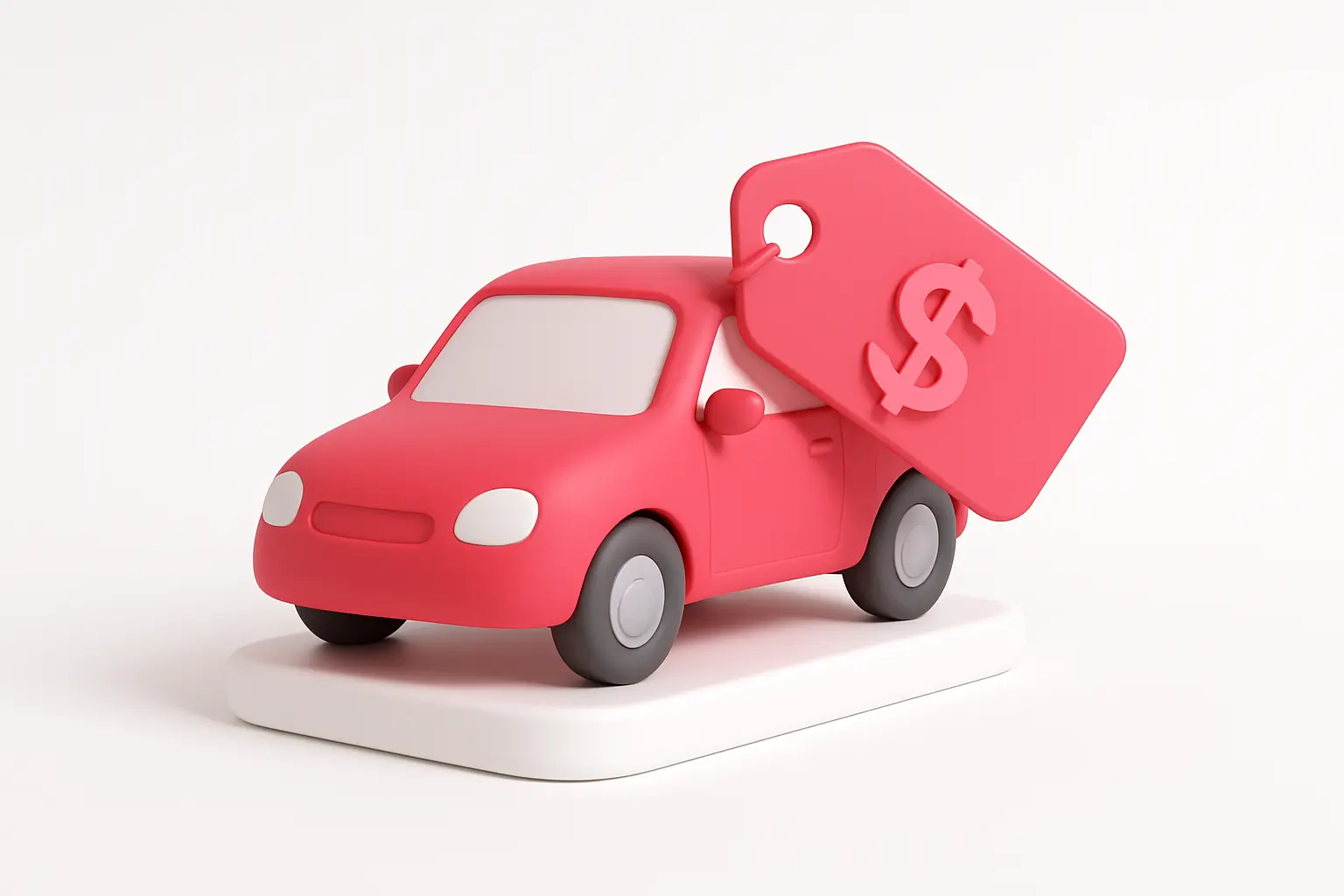Gap insurance bridges the financial gap when your car is totaled or stolen and you owe more than it’s worth. Your regular auto insurance pays the car’s current market value, but if that’s less than your loan balance, gap insurance covers the difference so you’re not stuck paying thousands out of pocket.
Jerry has helped 128,103 drivers get car insurance in the last year, including drivers who need gap insurance. Here’s what to know about how gap insurance works.
🚗 Scenario
You’re in a wreck and your car is worth $15,500, but you still owe the lender $18,000.
| Financial breakdown | Amount |
|---|---|
| Your remaining loan balance | $18,000 |
| Car’s current market value | $15,500 |
| Your collision deductible | $500 |
| Insurance payout to lender | $15,000 |
| Gap insurance covers | $2,500 |
Gap coverage won’t pay your deductible in most cases. You’ll still pay the $500 deductible, but gap insurance eliminates the $2,500 you’d have to come up with out of pocket.
The Jerry difference: Use the Jerry app to quickly compare car insurance quotes from companies that offer gap insurance to be sure you’re fully covered.

Jerry pulls up to 20 quotes from top rated carriers.
Do you need gap insurance?
Not everyone needs the coverage. Here’s a quick reference guide if you financed your car and aren’t sure where you stand.
✅ Consider gap insurance if you have:
- A down payment less than 20%.
- Loan term of 60 months or more.
- Rolled loan debt into your new auto loan.
- A car that loses value quickly.
❌ Skip gap insurance if:
- Your car’s value is greater than your loan balance.
- Gap is already included in your loan or lease contract.
Learn more: The 6 main types of car insurance
What gap insurance costs and where to buy it
Buying gap insurance from a dealership or bank can cost you hundreds of dollars more than purchasing it through Jerry. This is because they can roll the price in with your auto loan, and you’ll pay interest on your insurance.
Jerry recommends: Avoid getting gap insurance through your car loan. Instead, shop for car insurance quotes through the Jerry app and we’ll show you available quotes for coverage with gap insurance in minutes.
Get gap insurance quotes through Jerry
When you shop for car insurance, compare whether gap is available and how it is priced. You can get quotes through Jerry, then add or remove gap as your balance changes.
Let Jerry re-shop quotes for you at renewal or after major changes like paying down the loan or refinancing.
How long to keep gap insurance
Gap insurance serves a temporary purpose during the early financing period. Here’s when to evaluate your coverage.
Remove gap insurance if:
📊 Your payoff amount drops below current market value.
✔️ You pay off the loan early.
💵 You have enough savings to cover the difference between your loan and car’s value.
Jerry recommends: Review your gap insurance every six months by comparing your loan balance to current market value using Jerry’s app.
Similar coverage to gap insurance
Three coverage options provide similar protection to gap with different approaches. New and better car replacement are typically only available for vehicles less than a few model years old, but offer bigger payouts in the same scenarios.
📈 Loan/lease payoff coverage:
Similar to gap but may cap payouts at 25% of the vehicle’s value rather than covering the full difference.
🚗 New car replacement coverage:
Pays for a brand-new version of the same make and model when very new vehicles are totaled, rather than depreciated value.
⬆️ Better car replacement coverage
Provides enough money to upgrade to a newer model year of your totaled vehicle.
Jerry recommends: Ask a Jerry agent before choosing a different coverage since these alternatives may not provide the same protection as standard gap insurance, or they may cost more.

It only takes 2 minutes to sign up at Jerry.
FAQ
-
💰Is gap insurance worth the cost?
-
💸 Does gap insurance cover my deductible?
-
📅 Can I add gap insurance after buying my car?
-
💵 Can I cancel gap insurance and get money back?
-
🛡️ Why do I need gap if I have full coverage insurance?
Methodology
Data included in this analysis comes from policies that Jerry has quoted within the last 6 months for drivers with a clean record and that have full coverage, unless stated otherwise. Data related to violations, accidents or credit scores pull from quote data from the last 18 months. Jerry services 48 states and offers a range of insurance companies to choose from.

Ben Moore is a writer and editor at Jerry and an auto insurance expert. He previously worked as a writer, editor and content strategist on NerdWallet’s auto insurance team for five years. His work has been published in The Associated Press, Washington Post, Chicago Sun-Times, MarketWatch, Nasdaq and Yahoo News. He also served as a NerdWallet spokesperson, with appearances on local broadcast television and quotes in Martha Stewart and Real Simple magazine.
Ben has an extensive background in digital marketing, working on affiliate and programmatic advertising campaigns for brands like Cabela’s, H&R Block and Sears. He holds a bachelors degree in marketing from Olivet Nazarene University.






